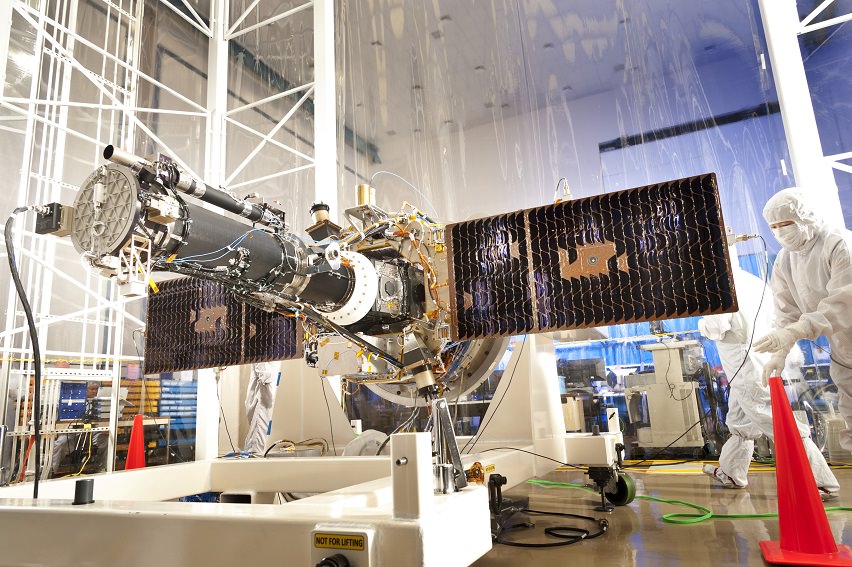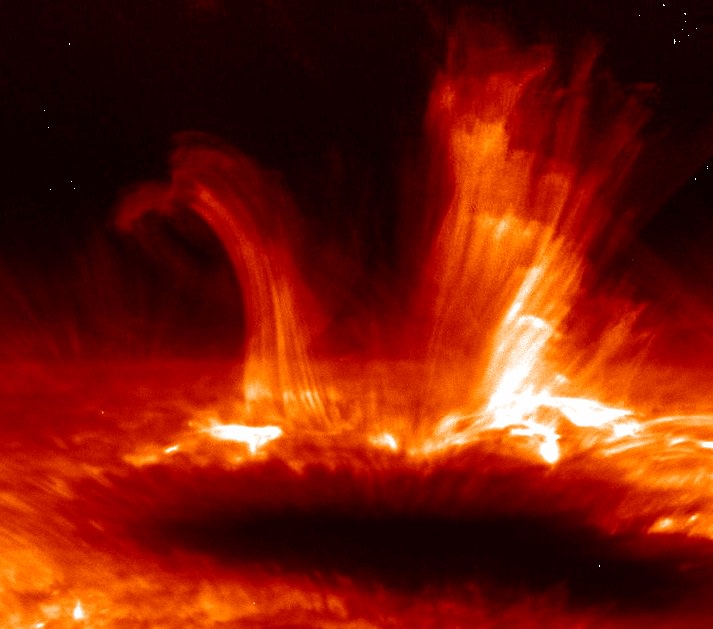How does the sun’s energy flow? Despite the fact that we live relatively close (93 million miles, or eight light-minutes) to this star, and that we have several spacecraft peering at it, we still know little about how energy transfers through the solar atmosphere.
NASA’s next solar mission will launch Wednesday, June 26 (if all goes to plan) to try to learn a little bit more. It’s called the Interface Region Imaging Spectrograph (IRIS), and it will zero in on a spot in the sun’s lower atmosphere known as the “interface region.” The zone only has a thickness of 3,000 to 6,000 miles and is seen as a key transfer point to the sun’s incredibly hot corona (that you can see during total solar eclipses.)
“IRIS will extend our observations of the sun to a region that has historically been difficult to study,” stated Joe Davila, IRIS project scientist at NASA’s Goddard Space Flight Center. “Understanding the interface region better improves our understanding of the whole corona and, in turn, how it affects the solar system.”
Figuring out more about the interface region, NASA stated, will teach us a lot more about the “space weather” that affects Earth.
Some of the energy in the interface region leaks out and powers the solar wind, which is a sort of rain of particles that leave the star. Some of them hit the Earth’s magnetic field and can produce auroras. Most of the sun’s ultraviolet radiation also flows from the interface region.
IRIS’ images will be able to zero in on about 1 percent of the sun in a single go, with resolution of features of as small as 150 miles. The 400-pound satellite will orbit Earth in an orbit perpetually keeping it above the sunrise line, a spot that lets the satellite look at the sun continuously for eight months without the sun being obscured by Earth.
It’ll also form part of a larger network of sun-staring satellites.

NASA highlighted its Solar Dynamics Observatory and a joint mission it has with Japan, called Hinode, which both take images of the sun in high-definition. These other two observatories, however, look at different solar layers (specifically, the surface and the outer atmosphere).
With IRIS joining the fleet and looking at the interface region, it will provide a more complete picture.
“Relating observations from IRIS to other solar observatories will open the door for crucial research into basic, unanswered questions about the corona,” stated Davila.
Source: NASA


Thanks for the video and update Elizabeth for this crucially important and timely mission… I for one can’t wait to see results!